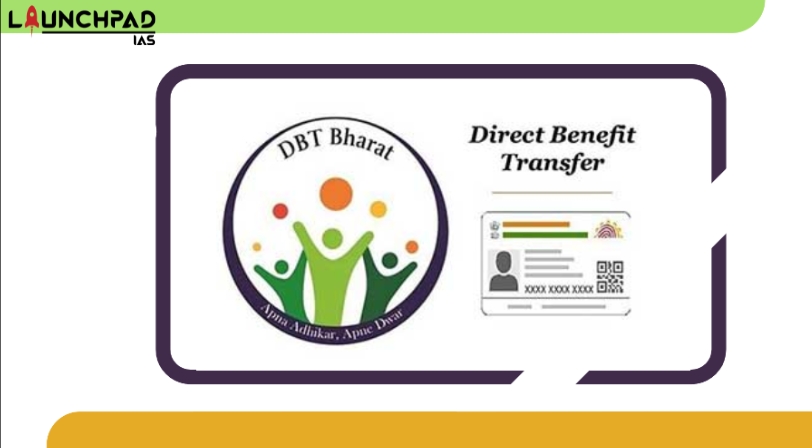What is a Direct Benefit Transfer Scheme?
- The Government of India initiated the Direct Benefit Transfer (DBT) Scheme on January 1, 2013, to directly transfer benefits to the underprivileged population covered by 34 central schemes. Through DBT, the government aims to make payments directly into Aadhaar-linked bank accounts, reducing malpractices like diversions and duplicate payments.
- The primary objective of the DBT program is to enhance transparency and eliminate pilferage in the distribution of funds sponsored by the Central Government of India.
- In DBT, benefits or subsidies are directly transferred to citizens below the poverty line, ensuring subsidies are targeted to those in need.
History of Direct Benefit Transfer Scheme
- The program was introduced by the Government of India in selected Indian cities on 1st January 2013.
- The former Union Minister for Rural Development, Jairam Ramesh, and the former Chief Minister of Andhra Pradesh N. Kiran Kumar Reddy launched the program at Gollaprolu in East Godavari district on 6th January 2013.
- The initial phase of DBT was instituted in 43 districts that covered scholarships and social security pensions, to begin with.
- With effect from December 2014, it extended throughout the country with MGNREGA also being brought under DBT along with 34 different schemes.
- At first, the nodal point for the implementation of the DBT programs, the DBT Mission was designed by the Planning Commission.
- But, from July 2013 until 14th September 2015, the DBT mission was taken over by the Department of Expenditure.
Major Enablers for the Direct Benefit Transfer Scheme
The success of a challenging and extremely worthwhile initiative like DBT relies upon a set of a few key factors. For a diverse and vast country like India, the key success factors or enablers for achieving a uniform deployment of a program like DBT would encompass:
JAM Trinity
DBT by leveraging the JAM (Jan Dhan, Aadhaar, and Mobiles) trinity and the technological prowess poses greatly improves the benefits of the delivery system in the nation. The JAM Trinity will permit this novel program to process benefits in a leakproof, well-focused, non-cash, and timely manner.
Business Correspondents (BC) Infrastructure
Reserve Bank of India created Business Correspondents / Banking Correspondents (BC) as an alternate option to conventional brick-and-mortar banks. BC is currently authorized to offer services such as cash transactions in places where the bank does not possess a branch. Business Correspondents or Bank Mitras will have a critical role in carrying out the program forward by ensuring the last mile connectivity. The strong presence of BCs will enable payments to be disbursed to the beneficiaries on time, at their doorstep, and of full value.
Payments Bank
A payments bank in India operates like any other bank, but on a smaller scale without involving any credit risk. It can carry out most of the banking operations and can allow fund transfers and remittances via a mobile phone, but cannot give loans or provide credit cards. The main goal of payment banks is to broaden the spread of payment and financial services to small businesses, low-income households, migrant labor workforce, etc. in a secure environment that is driven by technology throughout the country. On 19th August 2015, the Reserve Bank of India offered in-principle licenses to eleven entities for launching payment banks. With the introduction of payment banks, RBI seeks to raise the penetration level of financial services in the nation’s remote areas.
Mobile money
Mobile money is a fast-moving method of payment system in the nation. It could prove helpful in delivering a solution to last-mile connectivity issues, thereby improving the accessibility of DBT. There is a requirement to build an extensive eco-system for carrying out cashless transactions over a mobile platform using Aadhaar for identity. This will revolutionize the drive towards achieving financial inclusion.


